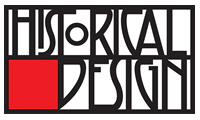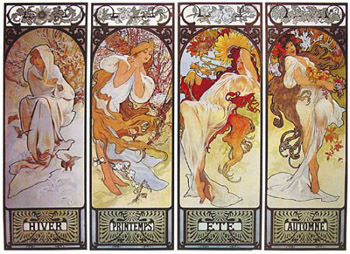Product Description
Firmin-Marcelin Michelet French Art Nouveau “Four Seasons” sculpted vase c. 1900


FIRMIN-MARCELIN MICHELET Sculptor (1875-1951) France
GENTIL ET BOURDET [pottery]
“Four Seasons” vase c. 1900
Glazed stoneware in a cream color with tan and light brown highlights molded with four female profiles and corresponding floral branches below representing the “Four Seasons” of the year
Marks: F. Michelet (underglaze), Gentil et Bourdet Architectes Ceramistes
Another example of this vase is in the collection of the Brighton Museum Brighton, England
Exhibited: French Art Nouveau from English Collections, City of Bristol Museum and Art Gallery, 1977, Cat. No. B7.
Illustrated: Art Nouveau, Art Deco and the Thirties; The Ceramic, Glass and Metalwork Collections at Brighton Museum (Brighton: The Royal Pavillion, 1986)cat. no. 41, p. 22.
For more information on Firmin-Marcellin Michelet see: Étains 1900:
200 Sculptures de la Belle Époque, Philippe Dahhan (Paris: Les Éditions de l’Amateur, 2000), p. 274.
H: 13 1/2″ x Dia: 7 1/4″
Price: $7,500
Firmin-Marcelin Michelet French Art Nouveau “Four Seasons” sculpted vase c. 1900
Tsuchida Yasuhiko (b. 1969) Osaka, Japan/ Italy
Art glass mosaic technique vase 1999
Overall matte finish art glass vase with an elaborate mosaic technique inset with red rectangular patchwork sections and blue murrina jewels all on a chocolate brown body with a black glass foot
Marks: Tsuchida Yasuhiko 99, 77
For more information see: Tsuchida Yasuhiko, exh. cat., Franco Schiavon (Murano, Italy: Palazzo del Vetro, 2000).
Provenance: Pauly & Co. Venice
H: 4 3/4″ x Dia: 5 1/8″
Price: $5,450
Yasuhiko Tsuchida was born in Osaka, Japan in 1969. In 1988, soon after graduating TSUJI Culinary Institute, he left Japan to explore food and art in Paris. Since 1992, he has lived in Venice, Italy. Tsuchida has been making glass work in Murano Island since 1995, and next year assumed the office of art director at Schiavone Glass Co. Ltd. In 1996 he presented a glass sculpture entitled “Bamboo Collection” with Japanese motif of bamboo. The work was highly acclaimed, which gave him a chance to start to hold solo exhibitions around the world. In 2000, Tsuchida became a member of the board of directors at Venetian Glass Institute, and a chief director there in 2003. In 2004, he won Honorary Technique Prize in Düsseldorf, Germany, and in 2008, received Award of Contribution to Cultural Promotion from Grosseto city, Toscana. In the same year, he represented Japan at International Open Exhibition of Sculpture, and won the Grand-Prix. In 2010, Tsuchida was invited to the Issei Miyake “IM10” Project Competition, and held a solo exhibition at Lorusso Gallery, Andria, Italy. Tsuchida continues to exhibit in many solo shows around the world.
